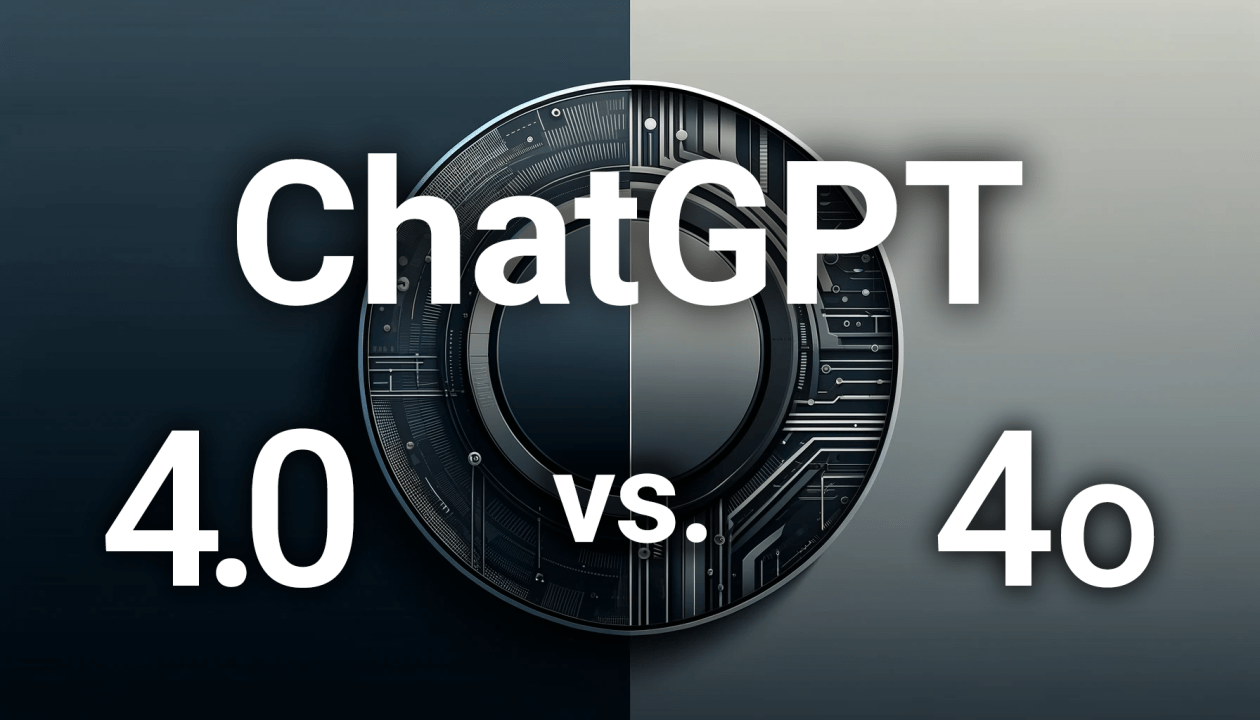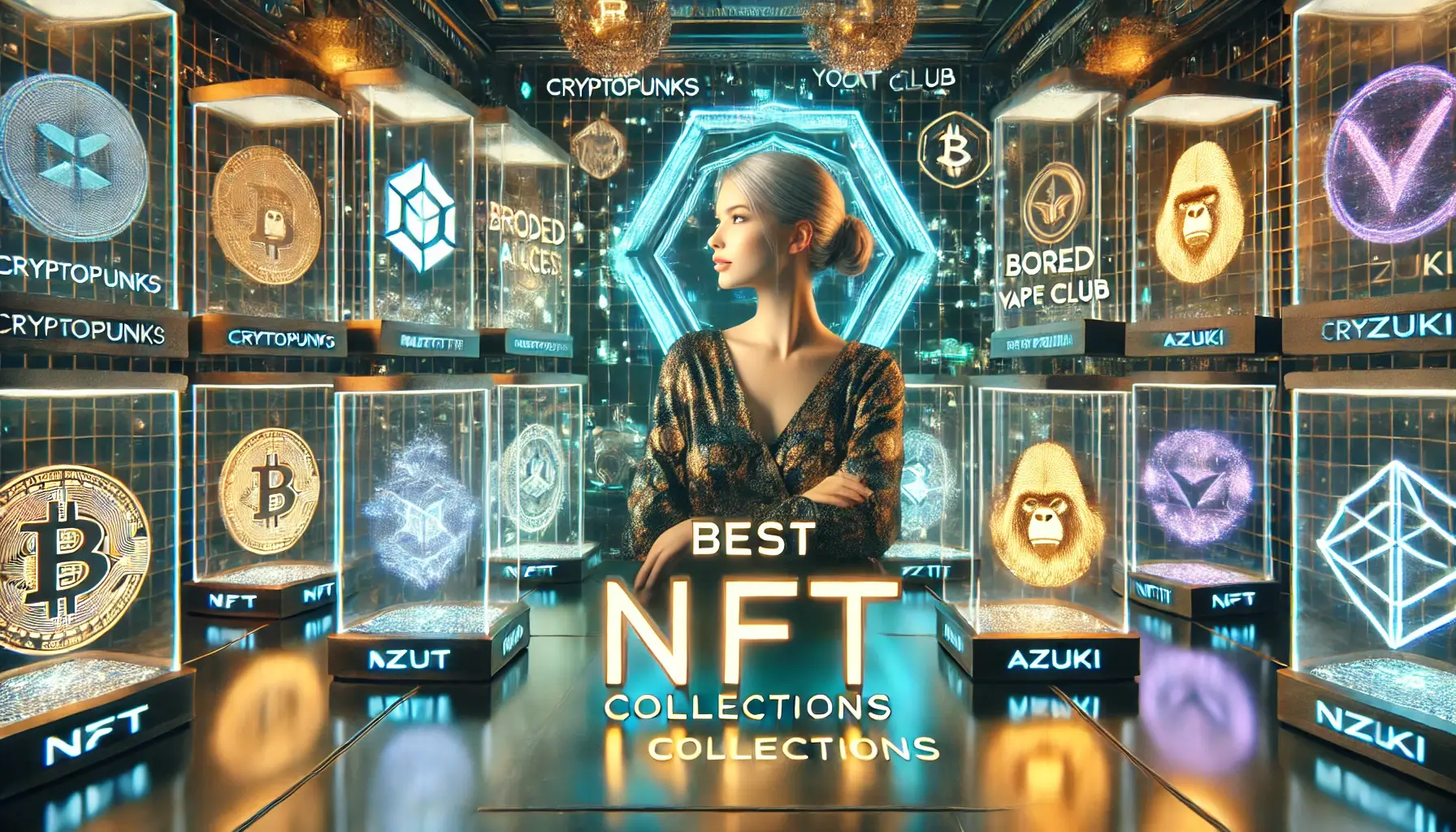GPT-4o: ChatGPT-4o Free AI Chatbot App & Voice AI Guide
GPT-4o: Uncover ChatGPT-4o free AI chatbot app, powerful voice AI features, and top tips to get the most out of this AI tool – full review!
GPT-4o, OpenAI’s latest multimodal AI chatbot app, is transforming the landscape of artificial intelligence with its powerful Voice AI and versatile capabilities. As a significant evolution from its predecessors, ChatGPT-4o goes beyond text-based interactions, offering real-time responses through text, voice, and image inputs—all available for general users. With its rapid processing speed and ability to understand emotions and context, 4o Model redefines what users can expect from an AI model, offering powerful voice AI capabilities and features that are free to some levels.
Building on the foundations laid by previous models like GPT-3.5 and GPT-4, this advanced AI tool introduces enhanced performance and a broader range of applications, from real-time conversations to complex data analysis. Whether you’re a content creator, business professional, or tech enthusiast, 4o model’s seamless integration of voice and visual processing makes it a game-changer in the realm of AI chatbot apps. In this complete guide, we’ll explore its features, unique capabilities, and top tips to maximize your experience with 4o Chatbot.

Let's dive into what makes 4o AI stand out and how it can revolutionize your AI interactions!
What is ChatGPT-4o?
4o Model is OpenAI’s groundbreaking multimodal language model that combines advanced capabilities in text, voice, and image processing, offering a seamless experience across various formats. Launched in May 2024, it is part of OpenAI's flagship AI model lineup and represents a leap forward in AI versatility and performance. The "o" in 4o Model stands for "Omni," symbolizing its ability to handle "everything"—from natural language understanding to real-time audio interactions and even visual content analysis.
Unlike its predecessors, which often required separate models for text, voice, and images, 4o Model merges these capabilities into a single, highly efficient model. This innovation significantly reduces response times and enhances contextual understanding, making it feel more natural and human-like during conversations. 4o AI is also the first of OpenAI's models to introduce emotional nuances in speech output, creating more personalized and engaging interactions.
Additionally, 4o Chatbot's high-speed audio processing—responding in just 320 milliseconds on average—places it on par with human response times. It can seamlessly handle complex queries, translate languages, and provide sentiment analysis, making it ideal for diverse applications ranging from customer support to creative writing. Whether you're using it through the free ChatGPT app or as part of a business solution, this versatile AI tool has something to offer everyone, pushing the boundaries of what this AI language model can achieve.
In essence, this OpenAI model is not just an evolution of OpenAI’s existing models—it’s a versatile, multimodal assistant that sets a new standard for AI-powered communication and interaction.
Key Features of GPT-4o
OpenAI’s 4o Model introduces a range of sophisticated features that redefine the capabilities of AI language models. Built to support a wide variety of inputs—text, audio, and images—this multimodal model offers more natural interactions, bridging the gap between human and AI communication. Here are the standout features that set it apart:
- Multimodal Functionality
4o Chatbot is designed to process and generate responses across text, voice, and visual data simultaneously. Unlike previous models that relied on separate neural networks, this version integrates everything into one powerful framework. This enables it to seamlessly switch between different inputs and outputs, making interactions feel more intuitive and engaging. - Advanced Voice AI and Emotional Nuances
One of the highlights of 4o AI is its rapid voice processing, which averages just 320 milliseconds per response—almost as fast as a human’s natural conversational pace. Beyond speed, the model includes emotional modulation, allowing it to speak with varying tones and inflections, adding a personalized touch to verbal interactions. - Enhanced Real-Time Context Understanding
Thanks to its large context window of up to 128,000 tokens, 4o Model can maintain coherence over extended conversations, making it ideal for in-depth discussions or analyzing large documents. This expanded memory capacity means it can remember and refer back to previous interactions, delivering more contextually aware responses. - Image and Vision Analysis
The model’s vision capabilities allow it to analyze complex images, identify objects, interpret scenes, and even read handwritten text. This feature is especially useful for tasks such as visual content analysis, data chart interpretation, or providing detailed insights based on visual prompts. - Faster and More Accurate Multilingual Support
4o AI boasts improved performance in over 50 languages, offering better translation accuracy and cultural nuances. This makes it a powerful tool for multilingual communication, expanding its utility for global audiences. - Reduced Latency and Enhanced Multimodal Reasoning
With its upgraded architecture, OpenAI's 4o model processes inputs faster without sacrificing accuracy. It outperforms its predecessors in benchmarks, particularly in tasks requiring complex reasoning, such as mathematical problem-solving or real-time language understanding. - Free Access and Cost-Effective API Options
OpenAI has made 4o AI available for free on the ChatGPT app, while offering a premium tier with additional benefits for power users. Developers can also access the model through an affordable API, making it an attractive option for businesses seeking to integrate advanced AI capabilities without a hefty price tag.
How to Access GPT-4o: ChatGPT-4o Free and Plus Options Explained
Accessing OpenAI's 4o model is straightforward, with options available for both free and paid users through the ChatGPT platform. Here’s a quick guide to get started:
- Free Access
GPT-4o is available to all users for free via OpenAI’s ChatGPT app. This option is ideal for casual users who want to explore its capabilities without a subscription. However, free access comes with some limitations on message volume and access to certain advanced features like real-time data processing, image analysis, and more in-depth voice capabilities. - ChatGPT Plus Membership
For those who need more frequent and powerful usage, ChatGPT Plus offers expanded access at $20 per month. With a Plus subscription, users get five times more requests compared to free-tier users, faster response times, and priority access during peak hours. Additionally, Plus members can fully leverage 4o Model advanced multimodal features, such as vision processing and file uploads. - Desktop and API Access
4o is also integrated into OpenAI’s ChatGPT desktop apps, making it easily accessible on macOS without needing to visit the website. For developers, GPT-4o can be accessed through OpenAI’s API, providing flexibility to integrate it into custom applications and business solutions.
To get started, visit the ChatGPT website and log in to explore the free or Plus options available for this model.
Exploring the New Voice AI Capabilities of ChatGPT-4o
One of the standout features of 4o ChatGPT is its advanced Voice AI, which takes natural language interactions to a new level. Unlike previous models, 4o language model can understand, process, and respond to voice inputs in real time with remarkable speed—averaging just 320 milliseconds per reply, making it feel more like a live conversation with a human.
But what truly sets it apart is its ability to generate speech with emotional nuances, adding variations in tone and rhythm to reflect different moods and contexts. This makes the interactions feel more engaging and less robotic, opening up new possibilities for voice applications, from virtual assistants to interactive storytelling. With this enhanced voice capability, users can now interrupt the AI mid-response, clarify queries, or adjust the conversation flow, making it more dynamic and responsive.
The model also handles multiple languages effectively, maintaining high accuracy and natural intonation across more than 50 languages. Whether it’s being used for real-time translations, customer support, or voice-driven navigation, 4o AI Chatbot’s Voice AI transforms typical chatbot interactions into rich, human-like experiences.
In essence, these voice upgrades not only improve usability but also set a new standard for AI-powered voice communication.
Multimodal Capabilities: Understanding GPT-4o’s Text, Image, and Voice Processing
4o Model redefines what AI models can achieve by integrating text, voice, and image processing into a single, cohesive system. This powerful multimodal capability means it can seamlessly handle various input formats and provide responses in any combination of text, audio, or visual content. This flexibility makes interactions more dynamic, allowing for a richer, more intuitive user experience.
The model’s text processing is refined for high accuracy and fluid language generation across more than 50 languages, making it highly adaptable for complex tasks like multilingual communication and contextual understanding. When it comes to images, 4o AI excels at analyzing visual data, identifying objects, interpreting scenes, and even reading complex charts or handwritten notes. This advanced image processing is ideal for use cases like visual content analysis and interactive image-based applications.
What truly sets 4o Chatbot apart is its sophisticated voice capabilities. It can respond in real-time with natural-sounding speech that varies in tone and emotion, adding a human-like quality to conversations. The ability to understand and generate audio, combined with text and image analysis, makes 4o Chatbot perfect for tasks ranging from voice-activated assistants to interactive multimedia experiences.
By combining these modalities, 4o Chatbot provides a unified and efficient solution that delivers coherent, contextually aware outputs regardless of the input type, making it one of the most versatile AI models available today.
GPT-4o vs. GPT-4 and Other AI Models
GPT-4o represents a significant leap from its predecessors, including the original GPT-4 and even the enhanced GPT-4 Turbo. Unlike these previous versions, which primarily focused on text processing, this new model is fully multimodal, combining text, image, and voice capabilities into a unified system. This multimodal architecture allows it to handle diverse input types simultaneously, making it far more versatile for real-world applications.

In terms of speed, GPT-4o outperforms its earlier counterparts. While GPT-4 often struggled with latency, especially when switching between different types of inputs, GPT-4o responds in real-time with almost no noticeable delay, even in complex voice interactions. This rapid response rate is particularly evident in its voice processing, which averages around 320 milliseconds, compared to GPT-4’s 5.4-second delay for similar tasks.
When compared to other leading models, like Anthropic’s Claude or Google’s Gemini, OpenAI’s latest offering stands out for its enhanced context awareness and memory capabilities. It can maintain coherence over conversations spanning up to 128,000 tokens, making it ideal for tasks that require deep context retention, such as detailed document analysis or long-form content creation. Additionally, GPT-4o has shown improved performance in multilingual tasks and better accuracy in understanding non-English languages, placing it ahead of some competitors in global applications.
Overall, this model isn’t just a step up in terms of technical specs; it’s a comprehensive upgrade that elevates the user experience, making it one of the most powerful and adaptable AI tools currently available.
Top Use Cases: Best Ways to Leverage ChatGPT-4o’s Potential
With its advanced multimodal capabilities and real-time responsiveness, OpenAI’s latest model offers a wide range of applications across various industries. Here are some of the best ways to harness its potential:
- Customer Support and Virtual Assistance
The model’s ability to seamlessly understand and respond in text and voice makes it an ideal candidate for virtual assistants and customer support bots. It can handle complex queries, provide detailed responses, and even pick up on the emotional tone of users, delivering a more human-like interaction. - Content Creation and Ideation
Writers, marketers, and creators can use this model for brainstorming, drafting articles, and generating high-quality content in multiple languages. Its large context window allows it to maintain coherence over long-form content, making it a valuable tool for generating creative pieces, blog posts, and detailed reports. - Real-Time Language Translation and Communication
Thanks to its refined multilingual capabilities, the model can serve as a powerful tool for real-time translations, international business communications, and multilingual customer interactions. It supports over 50 languages with high accuracy, making it suitable for global businesses. - Interactive Learning and Tutoring
Educators can leverage the model for interactive lessons, tutoring, and language learning. Its ability to switch between text, audio, and images makes it an engaging resource for explaining complex topics or offering visual and verbal feedback to students. - Visual Content Analysis and Data Interpretation
With strong image processing skills, the AI can interpret and analyze visual data like charts, images, or infographics. This makes it perfect for tasks such as financial analysis, visual data storytelling, or providing insights from complex visual inputs. - Voice-Activated Systems and AI Companions
The model’s advanced voice processing, combined with emotional nuance in speech, enables it to power voice-activated systems, virtual companions, and even interactive storytelling platforms that require natural, engaging voice interactions.
Tips and Tricks for Getting the Most Out of ChatGPT-4o
Maximizing the potential of OpenAI’s latest AI model requires a strategic approach. Here are some practical tips to enhance your experience and make the most of its unique features:
- Leverage Multimodal Inputs for Complex Queries
When tackling intricate tasks, use a combination of text, images, and voice inputs to provide more context. For example, if you’re analyzing a chart, upload the image along with a verbal explanation of what you’re looking for. This helps the AI provide more accurate and nuanced insights. - Experiment with Voice Interactions
Take advantage of the model’s advanced voice AI by using it in real-time conversations. You can interrupt, ask follow-up questions, and even switch the topic on the fly—just like a human conversation. This is especially useful for interactive sessions, brainstorming, or quick information retrieval. - Utilize the Expanded Context Window for Detailed Projects
With a context window of up to 128,000 tokens, this model excels at maintaining context over lengthy discussions or large documents. Use it to analyze long-form content, draft comprehensive reports, or have ongoing conversations without losing track of previous details. - Personalize Responses with Specific Prompts
To get more tailored results, provide clear and specific instructions. For example, instead of asking for a “blog post about AI,” try, “Create a 500-word blog post highlighting the benefits of AI in healthcare, focusing on diagnosis and patient care.” This will generate more focused and higher-quality output. - Tap Into Multilingual Support for Global Communication
Whether you need real-time translations or multilingual content creation, the model supports over 50 languages. Use this capability to streamline global interactions, create multilingual marketing materials, or engage with audiences in their native language. - Incorporate Emotional Tones for Human-Like Responses
Make your interactions more engaging by instructing the AI to use different tones and emotional expressions. Phrases like “reply in a friendly and enthusiastic tone” or “respond empathetically” can shape the output, adding depth to conversations.

Future Potential and Expected Updates for GPT-4o
The future of OpenAI’s latest model looks promising, with several expected updates aimed at enhancing its performance and expanding its capabilities. One key area of focus is improving the model’s multimodal functionality even further. While 4o AI already excels in combining text, voice, and image processing, upcoming updates are likely to refine its ability to integrate these inputs more seamlessly, allowing for even more intuitive interactions.
OpenAI has also hinted at diversifying the voice options, adding more languages and tones to make conversations more natural and versatile. This could include the ability to switch between multiple voices within a single conversation or dynamically alter the tone and inflection based on user preferences. Such improvements would be invaluable for creating lifelike virtual assistants or voice-activated systems that require nuanced speech.
Another anticipated upgrade involves the memory and context window. Although the model currently supports up to 128,000 tokens, future iterations may further extend this limit, enabling the AI to manage even longer documents and more complex discussions with better contextual awareness.
Additionally, there are plans to roll out improved real-time data processing and increased integration capabilities. This will allow the model to handle live information, making it suitable for more advanced use cases, such as financial analysis or real-time decision-making in dynamic environments.
These expected updates point to a future where OpenAI’s multimodal system becomes even more powerful and adaptable, capable of handling more diverse applications and offering deeper contextual understanding, making it a strong contender in the evolving AI landscape.
Conclusion: Is ChatGPT-4o the Ultimate Free AI Chatbot Solution?
4o Model represents a remarkable step forward in AI technology, blending text, voice, and image processing into a cohesive, highly efficient system that feels more natural and versatile than its predecessors. With its powerful multimodal capabilities, real-time voice interactions, and support for over 50 languages, it stands out as a versatile tool that caters to diverse needs—from content creation and customer support to multilingual communication and real-time data analysis.
What truly sets this model apart is its accessibility. Being available for free through the ChatGPT platform, along with affordable upgrades via ChatGPT Plus, means users can experience a high-quality AI solution without breaking the bank. The blend of performance, usability, and cost-effectiveness makes it one of the most attractive options for both casual users and professionals looking for an advanced AI assistant.
While no single model is perfect, OpenAI’s latest offering certainly pushes the boundaries of what a free AI chatbot can deliver, making it a top choice for anyone seeking a powerful yet accessible AI companion.
FAQs: Common Questions About ChatGPT-4o
What is ChatGPT-4o, and how is it different from previous versions?
4o Model is OpenAI’s latest multimodal AI model, designed to process text, images, and voice simultaneously. Unlike earlier versions, it combines all these capabilities into one cohesive system, offering real-time responses and improved contextual understanding. This makes it ideal for more diverse applications, such as dynamic voice interactions and visual data analysis.
Is ChatGPT-4o available for free?
Yes, 4o ChatGPT is accessible for free through OpenAI’s ChatGPT platform. However, free users may face limitations in terms of usage volume and advanced features. Upgrading to the ChatGPT Plus plan ($20/month) unlocks higher message limits, faster responses, and full access to advanced multimodal functionalities.
How can I use ChatGPT-4o for free?
To use ChatGPT-4o for free, go to the ChatGPT website and sign up or log in with your OpenAI account. The free plan offers access to the model but with some limitations on usage volume and advanced features like in-depth voice and image processing. If you need more capabilities and priority access, consider upgrading to the ChatGPT Plus plan for $20 per month, which provides expanded usage, faster responses, and access to additional multimodal features.
What makes 4o AI Chatbot’s voice capabilities unique?
This model stands out for its ability to generate speech with emotional nuances, such as varying tone and rhythm, making voice interactions feel more natural and human-like. It also supports real-time conversation with response times as fast as 320 milliseconds, allowing for fluid, dynamic exchanges.
Can 4o ChatGPT handle multiple languages?
Yes, the AI supports over 50 languages, making it a powerful tool for multilingual communication. Whether you need real-time translation, multilingual content creation, or customer support in different languages, this model offers high accuracy and cultural sensitivity across various linguistic tasks.
What are the main use cases for ChatGPT-4o?
Its flexibility makes it suitable for a wide range of scenarios, from customer service and virtual assistance to content creation, real-time translations, and educational tutoring. It’s also great for analyzing visual data, creating interactive voice-activated systems, and handling complex, long-form conversations.
How can developers access OpenAI 4o's API?
Developers can access the model through OpenAI’s API, which allows for seamless integration into custom applications. This makes it easy to leverage its advanced features for business solutions, voice-activated assistants, or specialized AI tools tailored to specific industry needs.














Discussion